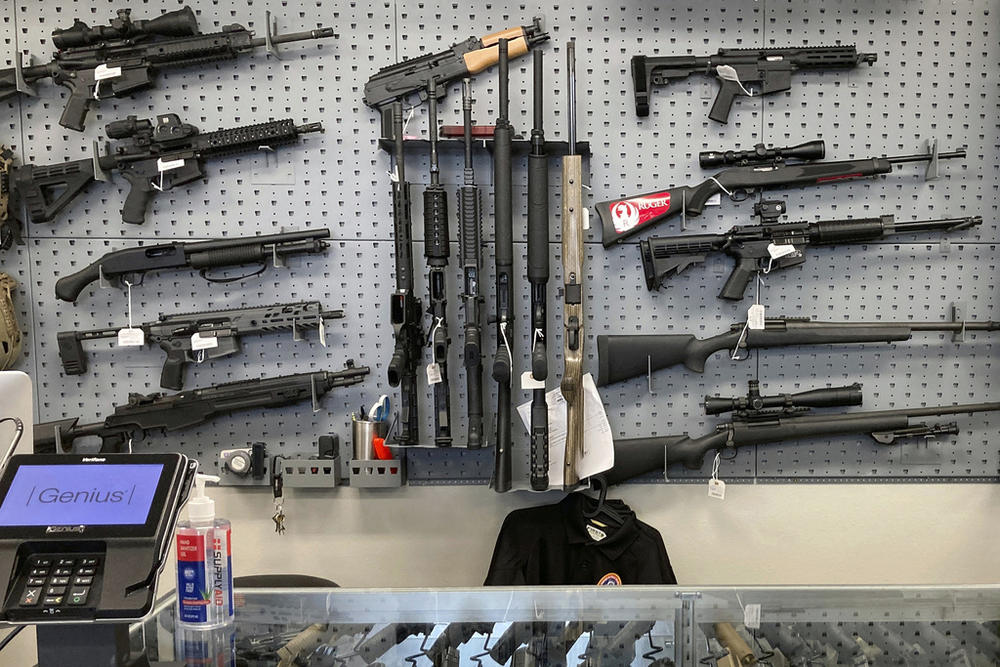
Section Branding
Header Content
Study: Kids whose parents taught them to shoot are more likely to have access to a loaded gun
Primary Content
LISTEN: Firearms are the leading cause of death for children in the United States. But a new study of gun-owning parents finds many believe teaching their children proper gun handling and safety is more critical than providing safe gun storage. GPB’s Ellen Eldridge reports.

Parents who demonstrate and practice proper firearm handling with their children and teach them how to shoot their firearms are more likely to store at least one firearm unlocked and loaded, according to a new study from the Gun Violence Research Center at Rutgers University.
Study author Jennifer Paruk said that, even in responsible gun-owning families, the risk of injury and death isn't worth having unsecured guns.
"Keeping them unlocked, keeping them loaded, like ready to go, increases the likelihood that your child is going to die," Paruk said.
In 2020, firearm injuries became the leading cause of death among U.S. children and adolescents, with worsening disparities.
In 2021, among children who died by firearms, 84.8% were male, 49.9% were Black, 82.6% were aged 15 to 19 years, and 64.3% died by homicide, according to the American Academy of Pediatrics.
White children accounted for 78.4% of firearm suicides.
From 2020 to 2021, the suicide rate increased among Black and white children, yet decreased among American Indian or Alaskan Native children. Geographically, there were worsening clusters of firearm death rates in Southern states and increasing rates in Midwestern states from 2018 to 2021.
In 2022, firearm injuries (all types), were among the five leading causes of death for people ages 1 to 44 in the U.S, according to the Centers for Disease Control and Prevention. Firearm injuries were the leading cause of death among children and teens ages 1 to 19.
Some parents in focus group interviews said they keep their kids safe by teaching them how to carry a firearm and use it properly and that practical firearm safety education eliminates the need for secure storage.
"The parents say, 'I taught my kid how to use it safely, then now why do I need to keep it locked up?'" Paruk said.
These parents said they are serious about the risk of guns in the home, and tell their children not to touch the weapons when they're not around. But Paruk said that instruction may not be sufficient.
"We want to ask parents, 'When you were a kid, did you ever sneak around your home or around your parents?'" Paruk said. "Or, 'Did you ever do something that your parents, you know, weren't aware of or specifically told you not to do?'"
The study participants were given a list of 11 different behaviors around guns and how parents engage their children.
For example, "Do you talk about firearm safety with your children? Do you demonstrate proper firearm handling with your kids?" Paruk said. "We also asked them, 'Do you store any of your firearms unlocked and loaded?'"
The researchers also asked about the types of firearms parents said they have.
Future studies on gun safety should investigate the effects of parental engagement in situations where children were injured or killed by firearms, Paruk said.

